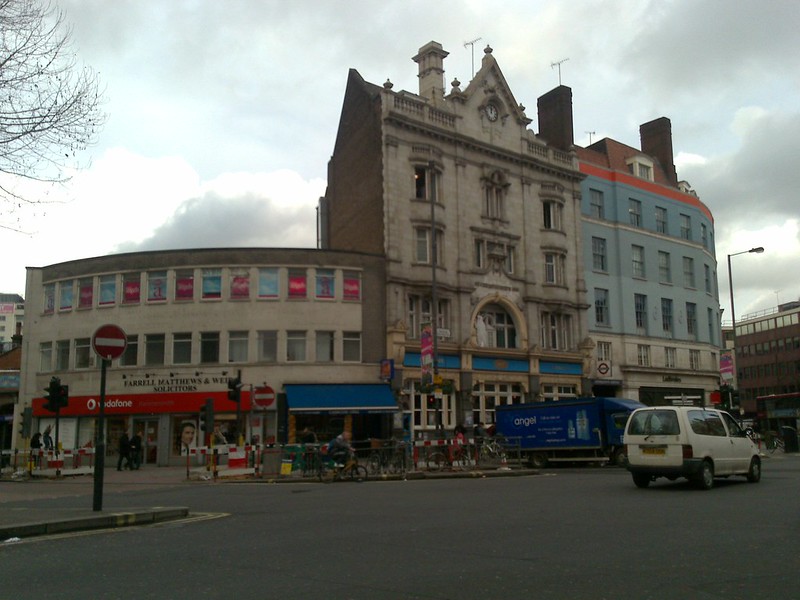The River Thames is a thriving cultural hub and a prime location for shopping and entertainment in Hammersmith, with eclectic productions at the Lyric theatre and rock concerts at the Apollo concert hall. King Street and Kings Mall are filled with a wide range of shops and cafes, while trendy gastropubs and historic drinking dens do battle with one another. A leafy walking trail winds along the River Thames and its bridge. The annual university boat race is a popular event and attracts a large crowd.
History of Hammersmith London
The district was a chapelry of the ancient parish of Fulham, but became a fully independent parish in 1631. In 1868, Hammersmith was the name of a parish, and of a suburban district, within the hundred of Ossulstone, in the county of Middlesex. In the early 1660s, Hammersmith’s first parish church, which later became St Paul’s, was built by Sir Nicholas Crispe who ran the brickworks in Hammersmith. It contained a monument to Crispe as well as a bronze bust of King Charles I by Hubert Le Sueur. In 1696 Sir Samuel Morland was buried there. The church was completely rebuilt in 1883, but the monument and bust were transferred to the new church.
In 1745, two Scots, James Lee and Lewis Kennedy, established the Vineyard Nursery, over six acres devoted to landscaping plants. During the next hundred and fifty years the nursery introduced many new plants to England, including fuchsia and the standard rose tree.
Major industrial sites included the Osram lamp factory at Brook Green, the J. Lyons factory (which at one time employed 30,000 people). During both World Wars, Waring & Gillow’s furniture factory, in Cambridge Grove, became the site of aircraft manufacture.
A receiving home for 65 children was established in Hammersmith in the 1920s. This facility would process children entering the union’s care. At the time, children attending the parish’s school would be sent to the nearby District School at Ashford. Despite these changes, many repositories imposed a hundred-year closure period. Before attempting to research records, it’s best to visit a local repository to check that they still hold records on Hammersmith.
King Street
King Street in Hammersmith is one of the city’s main shopping thoroughfares. It runs from west to east and forms part of the A315 road. It is the eastern continuation of Chiswick High Road, and is close to Stamford Brook tube station. Here are some of the best places to shop on King Street in Hammersmith. Also, be sure to check out nearby King Street Tube station for convenient transportation.
If you’re a foodie, you’ll be happy to know that King Street is a great place to go for a tasty breakfast or lunch. There are plenty of restaurants and cafes along the street, ranging from chain restaurants to neighbourhood gems. Residents can be smug about being a part of a great neighbourhood, and there’s plenty to do here. The Lyric Theatre serves as the focal point of culture and the arts in west London. And don’t miss the market on Thursdays, where you can find fresh takeaway meals.
Ravenscourt Park
This historic park in Hammersmith, London, was saved from destruction in the mid-19th century by a local council. On November 20, 1887, the Metropolitan Board of Works purchased the park from the Hammersmith Vestry for £5,000; the local council contributed half of the price. The park has undergone extensive restoration since then. This article outlines its history. The park has been designated as a conservation area.
The northern section of Ravenscourt Park is called Starch Green. This area used to be known as Gagglegoose Green, and a pond was spotted there. The park received its name from the numerous laundries that existed in the area in the 18th century. In the nineteenth century, rabbit breeding was a popular industry in this area, and rabbits were used in the meat market.
The housing stock in Ravenscourt Park is mostly Victorian, and larger houses carry a premium price tag. Residents of this London district enjoy access to nearby parks and green spaces, such as the Ravenscourt Park, which includes a playground for children. The area is also well served by buses, and is conveniently located near several other parks. It has a lower crime rate than other parts of London, but is still a popular place for those looking for a safe environment.
Eventim Apollo
The Hammersmith Odeon, also known as the Hammersmith Apollo, is a Grade II* listed building located in Hammersmith, London. The theatre was originally built in 1934 and opened as an art deco cinema. Its design and architecture is reminiscent of the art deco style. In a word, the Hammersmith Odeon is amazing. Not only does it house the best shows in the city, it’s also an iconic London landmark.
Eventim Apollo in Hammersmith – London is a legendary live music venue. After being acquired by AEG Live in 2012, CTS Eventim upgraded the venue to modern standards. In order to improve audio quality, Hammersmith Odeon operators decided to install a state-of-the-art line array house PA system. The result is a top-notch experience for concertgoers, as well as for the local community.
When it comes to entertainment in London, the Eventim Apollo is a must-see. It is the largest live entertainment venue in London, and is one of the best preserved original theatres in the UK. It was designed by Robert Cromie, the same architect who designed the Prince of Wales Theatre. The Eventim Apollo opened as a cinema in 1932, and the theater’s current name is even more impressive. It hosts top-quality dance shows, comedy shows, and even children’s events. It has a seating capacity of over 5000 people.
Emery Walker’s House
The house has a rich history. It was built in the late 1870s and was occupied by Emery Walker for 24 years. Before then, the area was occupied by waterworks, breweries and timber wharves. The home of Emery Walker was renovated and the interiors refurbished to reflect the era’s rich cultural history. In 1903, Emery Walker moved into Number 7 Hammersmith Terrace, where he lived for another 30 years. The house later became home to calligrapher Edward Johnston, who was responsible for the iconic roundel of the London Underground.
This beautiful home was once owned by Emery Walker and his family, but he donated the house and its contents to the Emery-Walker Trust. The house was renovated in the late 1980s and is now open to the public for tours. It contains the furnishings and textiles of the celebrated typographer, including the work of William Morris and he collected Middle Eastern ceramics. The house is open from March to November, and you can become a Partner to access its interiors.
Kelmscott House
Visit the William Morris Society in Hammersmith, London to learn about the founder of the Modern Movement. The society has offices in the house’s coach house and basement. The main house is privately owned. The coach house and basement are now used by the Society, which includes a museum about Morris’ life, examples of his wallpaper and textile designs, and an actual printing press. Visitors can also see a collection of artefacts in the house, including his first edition of Kelmscott Chaucer.
The upper garden still contains some of the gardens created by Morris. There are lawns, shrubs, flower beds, and trees, as well as a strawberry patch. This garden is said to have inspired the design of one of Morris’ most famous textiles, the Strawberry Thief. This design was inspired by the sight of a thrushes raiding the soft fruit of a rose at Kelmscott Manor.
Queen’s Club Championships
The Queen’s Club in Hammersmith – London, is a hidden oasis in the heart of central West-London. Designed for both social and sporting enjoyment, the club’s facilities are a haven of calm near the centre of London. As the British headquarters of traditional sports, the Queen’s Club offers an unforgettable sporting day. You can also organise your own event, or create a bespoke sporting day package for friends and family.
The Queen’s Club has long been one of the finest tennis venues in the world. Founded in 1881, the Queen’s Club is home to the annual Queen’s Club Championships men’s grass court lawn tennis tournament, and the Cinch Championships, which are held in January. With 28 outdoor courts and ten indoor ones, the Queen’s Club is home to the British Open every year – except in 2020 when the coronavirus pandemic disrupts the event. The club has a full programme of tournaments, including tennis, squash, and rackets.

